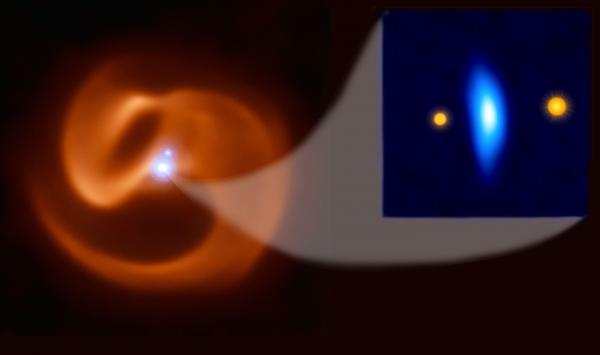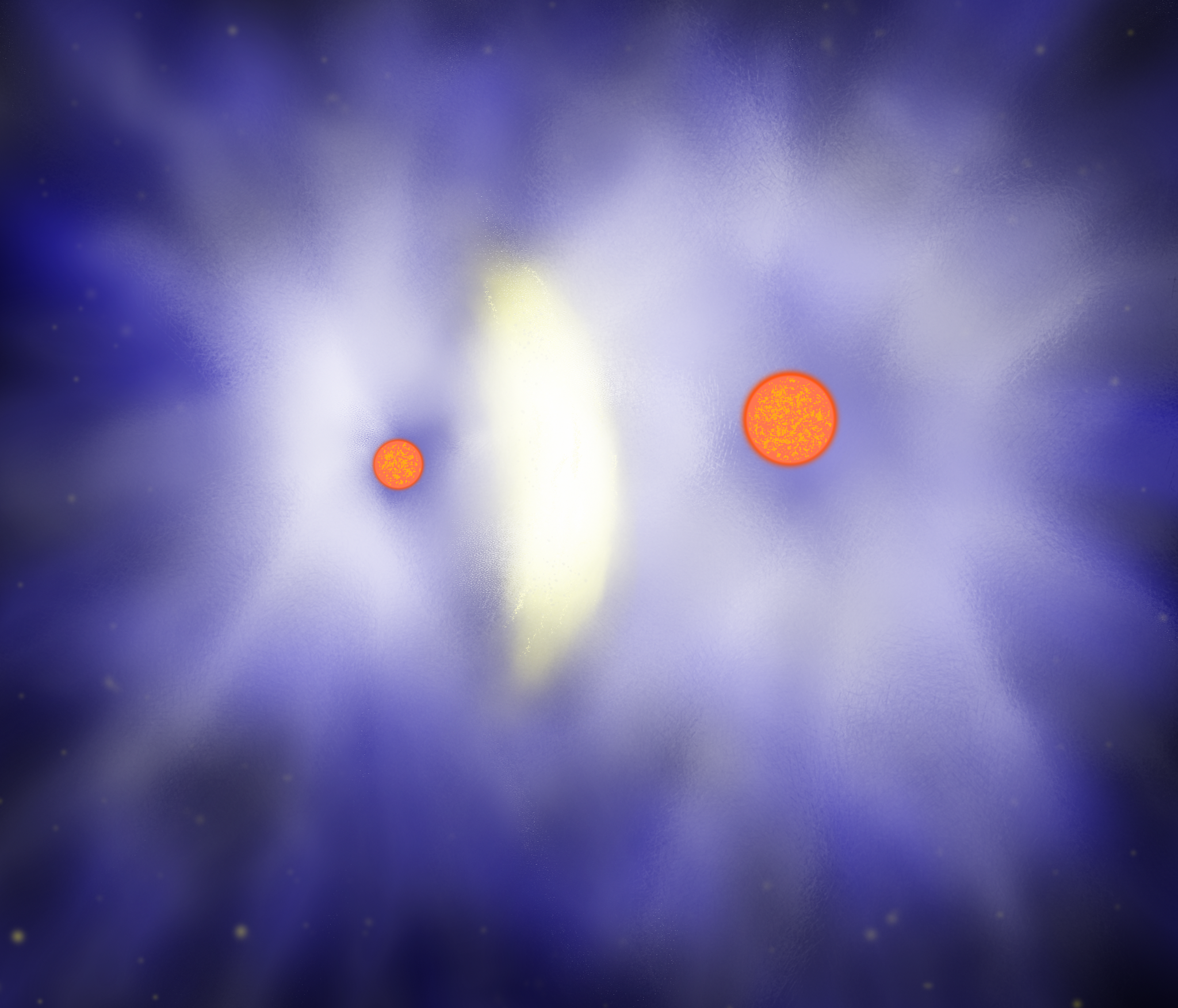
The stellar system known as Apep was recently discovered due to its spectacular and elegant spiral dust structure. This pinwheel pattern originates from two Wolf-Rayet stars located at its heart. Wolf-Rayet stars represent the very last stages in the life of the most massive stars, re-presenting the phase of stellar life immediately before they collapse to produce a supernova ex-plosion. In this case, Apep is strange as it is the by far brightest of such colliding-wind systems, especially at radio wavelengths.
To understand the origin of this surprising brightness, and unveil what was happening at the core of the spiral of dust, astronomers conducted radio observations of Apep with the Australian Long Baseline Array (LBA). This array combines data from ten radio telescopes spread around Aus-tralia and New Zealand, reaching a resolution that is sharp enough to identify a truck on the sur-face of the Moon when looking from the Earth.
By pointing all these telescopes to Apep, astronomers discovered the origin of all this radio emis-sion: the light arises from an extreme shock produced by the collision of the two stellar winds. "The two Wolf-Rayet stars in Apep total 20 times the mass of the Sun, and exhibit winds of up to millions of kilometers per hour. When these two winds collide they produce a very strong and extreme shock, never observed in our Galaxy before. This shock is observed as a banana-shaped structure that emits brightly at radio waves", says Dr. Benito Marcote (from the Joint Institute for VLBI ERIC, The Netherlands), who led the study that has been recently published in the Monthly Notices of the Royal Astronomical Society.
The imaging of this region where the two winds collide allowed the astronomers to test the beha-vior of the stellar winds of these dying Wolf-Rayet stars. Given that the stars only spend a limited time on this Wolf-Rayet phase before their death in a supernova explosion, astronomers have confirmed that these systems must be very rare in our Galaxy. "Apep is the first system of its kind and we are now starting to understand how these stars may behave, the dynamics of their strong stellar winds, and how the enormous amounts of dust are produced after their wind colli-sion", says Dr. Joe Callingham (from Leiden University and ASTRON, The Netherlands), origi-nally discoverer of Apep and co-author of this study. This dust, which is expelled out the system following the orbital motion of the two stars, is the responsible for the beautiful pinwheel spiral structure.
The two Wolf-Rayet stars in Apep are slowly dying. If the environment around the system is al-ready significantly more extreme than any other known system involving two massive stars, as-tronomers expect this system to end its life in an extreme explosion. Extreme enough to make Apep the most potential system to produce a gamma-ray burst at its end - a very energetic flash of gamma-rays that to date has only been observed at cosmological distances, never in our Galaxy.

Paper
Marcote, Callingham, De Becker, et al. 2021, MNRAS, 501, 2, 2478
https://doi.org/10.1093/mnras/staa3863
Images
• Artistic representation of the collision of the two stellar winds in Apep. Credit: K. Immer (freelance graphic designer; https://katharina-immer.com).
• Real images of the dust spiral seen in Apep in infrared and, right at its center, the region where the two stellar winds collide and emitting in radio (seen as the blue structure in the inset, where the two stars represent their real positions). Credit: B. Marcote & ESO/Callingham.
